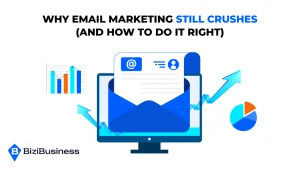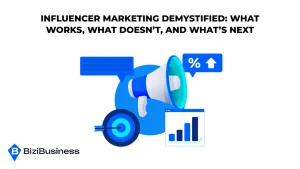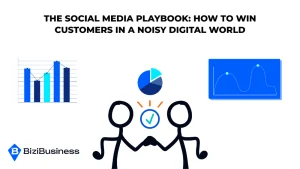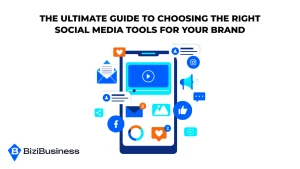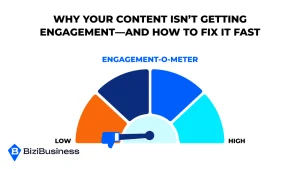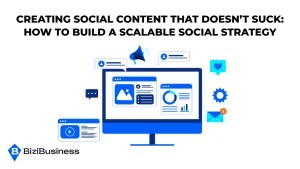BiziTopics
Why Segmentation Is The Unsung Hero Of High-Performing Email Campaigns
BiziBusiness
Aug 12, 2025
10 min read
Let’s be honest. Your subscribers don’t want another one-size-fits-all message in their inbox. They want relevance, timing, and proof that you actually understand them.
Too many marketers still think personalization means adding a first name to the subject line. But that trick is old, and your audience knows it. Personalization without strategy and planning feels hollow. It doesn’t connect, and it definitely doesn’t convert.
Segmentation, on the other hand, is the powerhouse no one’s talking about enough. It is not just about slicing your list building. It is about sending the right message to the right people at the right moment. It turns a basic newsletter into a targeted experience that drives results.
When you segment, you stop guessing. You start delivering content that makes people click, respond, and buy. And when you combine smart segmentation with thoughtful personalization, that’s when the magic happens.
In this article, we’ll dive into what segmentation really is, how it differs from personalization, and why it has become the secret weapon behind today’s most successful email campaigns.
Why Segmentation Works (and Why Blasts Fail)
Email marketing is only effective when it speaks directly to the person receiving it. One-size-fits-all blasts might seem efficient, but they often backfire. The real power lies in segmentation: targeting smaller, more specific groups with tailored content that resonates.
Relevance Equals Higher Open and Click Rates
When an email feels personal and timely, readers are more likely to engage. Segmented campaigns align with:
- Where a subscriber is in the customer journey
- What content or products they’ve interacted with before
- Their preferences, location, or industry
By matching content to intent, segmented emails consistently outperform generic sends. Open rates rise because the subject lines make sense for that segment. Click rates increase because the message speaks to an actual need.
Audience Fatigue and List Churn from Untargeted Emails
Generic email blasts lead to subscriber fatigue. When people receive irrelevant emails too often, they tune out. Worse, they may unsubscribe or mark you as spam.
Every irrelevant send eats away at your list health. Engagement analytics and metrics drop, deliverability suffers, and even your best campaigns struggle to land in the inbox. Over time, your list erodes—not because your product is bad, but because your messaging missed the mark.
Behavior-Backed Proof: Segmented Emails Get 3x More Engagement
The numbers tell the story. Research consistently shows that segmented email campaigns:
- Achieve up to three times more engagement
- See significantly lower unsubscribe rates
- Generate more conversions from the same list
Whether you’re grouping by purchase history, website behavior, or email interactions, segmentation turns a passive audience into an active one. It’s not just smarter marketing—it’s essential for long-term success.
The Segmentation Spectrum: From Basic to Advanced

Segmentation isn’t a one-size-fits-all strategy—it’s a progression. As your data and tools evolve, so should your targeting. Whether you’re just starting out or running advanced automation and metrics, understanding the different levels of segmentation can help you engage smarter and convert better.
Level 1: Demographic (Age, Gender, Location)
This is the starting point for most email strategies. Demographic segmentation helps you tailor messaging based on basic attributes:
- Send region-specific promotions
- Adjust language or tone by age group
- Promote gender-targeted product lines
It’s useful, but also limited. These filters alone don’t tell you why someone is interested or what action they might take next.
Level 2: Behavioral (Opens, Clicks, Pages Visited)
Behavioral segmentation dives into what your subscribers actually do:
- Who opens your emails consistently?
- Who clicks on certain topics or categories?
- Which pages or products have they browsed?
This level allows for reactive campaigns—like follow-ups based on product views or reminders after an abandoned browse session. These actions are signals of intent, and tailoring your messaging accordingly can significantly improve results.
Level 3: Lifecycle (New Subscribers, Cart Abandoners, Repeat Customers)
This is where segmentation starts to drive real revenue. Lifecycle-based segments align with where someone is in their journey:
- New subscribers might need onboarding content
- Cart abandoners need urgency and reassurance
- Loyal customers should see rewards or VIP offers
By mapping email content to lifecycle stages, you guide each contact toward deeper engagement and higher lifetime value.
Level 4: Psychographic and Interest-Based
At the top of the segmentation pyramid is personalization rooted in mindset:
- What values or motivations does your audience hold?
- What content themes do they gravitate toward?
- Which product categories do they prefer over time?
This level is powerful because it taps into why people buy—not just who they are or what they’ve done. By aligning tone, visuals, and offers with these preferences, your emails feel tailored and intuitive, not just timely.
5 Common Mistakes in Email Segmentation

Segmentation is a powerful tools and platforms—but only when used correctly. Poor execution can lead to missed opportunities, frustrated subscribers, and even compliance risks. These are the five most common pitfalls to avoid.
1. Over-Segmenting and Under-Delivering
Breaking your list into too many micro-groups sounds smart, but it can create operational chaos. If each segment requires its own campaign and you can’t deliver content consistently, engagement suffers.
Focus on quality over quantity. Start with high-impact segments and build from there. Don’t create more groups than you can realistically support with tailored, valuable content.
2. Using Stale Data or No Data at All
Your segmentation is only as good as the data behind it. If you’re relying on outdated preferences or incomplete profiles, your targeting will miss the mark.
Use real-time or regularly updated data wherever possible. Behavioral signals, recent activity, and updated preferences are far more reliable than what a subscriber indicated two years ago.
3. Assuming One Segment Equals One Campaign
Segmentation isn’t just about separating audiences—it’s about aligning your messaging strategy. A single segment may need different campaigns based on timing, lifecycle stage, or current engagement level.
For example, your “engaged shoppers” segment might receive a product launch, a review request, or a loyalty offer—all at different times. Strategy should drive the content, not the segment label alone.
4. Not Syncing Segmentation With Goals
If your segmentation doesn’t map to clear business goals, it’s just busywork. Every segment should support a specific objective, whether it’s improving conversion, reactivating dormant users, or boosting average order value.
Before launching a campaign, ask: How does this segment contribute to our marketing KPIs? If you can’t answer that, rethink your approach.
5. Forgetting Compliance and Consent (GDPR, CAN-SPAM)
Targeted emails still have to follow the rules. Sending to people who haven’t opted in—or using sensitive data without clear consent—can lead to fines and damage your brand’s trust.
Make sure your segmentation respects user preferences and legal boundaries. Always include an easy opt-out, and stay transparent about how you use subscriber data.
Segmentation Strategy: Start With Intent, Not Lists

Too often, marketers start with their email design list and work backward. They create segments based on what data is available instead of what their campaign needs to achieve. A smarter strategy begins with intent—the outcome you want—and builds segmentation to support that goal.
Define Your Campaign’s Real Objective
Before choosing segments, ask: What is this campaign supposed to do?
- Drive sales?
- Re-engage inactive users?
- Onboard new subscribers?
- Educate and nurture leads?
Once you’re clear on the primary goal, your segmentation can be purpose-built to amplify that intent. Don’t just send because a list exists. Send because it supports the action you want the user to take.
Match Segment Structure to Funnel Stage
Different segments perform different functions depending on where they fall in the customer journey:
- Top-of-funnel: Segment by interest or acquisition source to deliver high-value content that builds trust
- Mid-funnel: Use behavior-based segments (like product views or webinar sign-ups) to push toward conversion
- Bottom-of-funnel: Focus on urgency and loyalty, segmenting based on purchase history, spend level, or churn risk
This alignment ensures that your content is relevant, timely, and positioned to move subscribers to the next stage.
Set Dynamic Rules to Auto-Update Segments
Manual segmentation is time-consuming and prone to error. Instead, use automation to create dynamic segments that update in real time based on subscriber behavior and profile changes.
For example:
- Automatically move someone from “new lead” to “active prospect” after they click a certain link
- Drop inactive subscribers into a re-engagement flow after 30 days of no opens
This approach ensures that your emails are always relevant—because your segments evolve with your audience.
Map Content Type to Segment Need
Different segments have different expectations and information needs. Match content formats accordingly:
- Blog posts and how-to guides for early-stage readers
- Case studies and testimonials for decision-makers
- Promotions and upsells for existing customers
The tighter the alignment between segment and content type, the more likely your emails will deliver value, and drive action.
Tools and Tactics for Smarter Segmentation
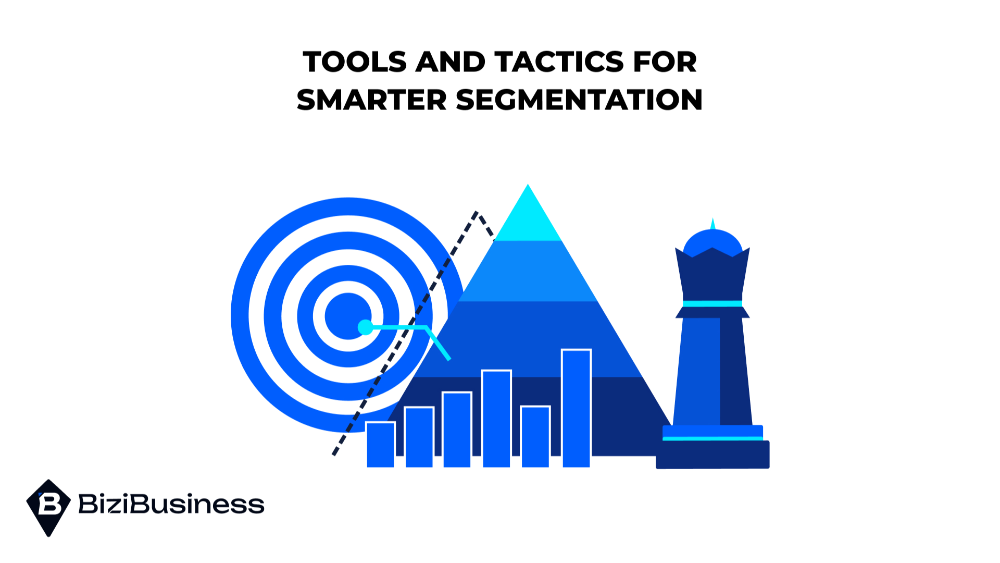
Effective segmentation depends not just on strategy, but also on the right tools and data infrastructure. To create scalable, responsive, and high-converting campaigns, you need technology that enables precision without adding complexity.
ESPs With Strong Segmentation Logic
Choosing the right email service provider (ESP) is foundational. Look for platforms that support advanced segmentation capabilities such as:
- Real-time behavioral filtering
- Multi-condition logic
- Predictive scoring or AI-driven recommendations
Klaviyo, HubSpot, and ActiveCampaign are standout choices. They let you segment based on purchase history, site activity, lead scoring, and more—all without leaving the platform.
Integrating CRM or Purchase Data
The more context you have on a subscriber, the better you can personalize. That’s why cross-channel integration your CRM, e-commerce platform, or sales data into your ESP is critical.
This allows you to:
- Tailor messaging by lead status or pipeline stage
- Trigger emails based on past purchases or product usage
- Upsell based on average order value or customer type
When segmentation reflects full customer context, every email becomes smarter and more relevant.
Behavior Tracking and Event-Based Triggers
Set up tracking to capture what your users do—not just who they are. Behavior-based segmentation can include:
- Pages viewed or time spent on site
- Products added to cart but not purchased
- Emails opened or links clicked
Pair this data with event-based automation, like:
- Sending a follow-up after a webinar registration
- Triggering a discount after someone views a product three times
- Launching a re-engagement flow after 30 days of inactivity
These tactics ensure that your emails feel timely and responsive, not generic.
When to Use Static vs. Dynamic Segmentation
Both types of segmentation serve a purpose:
- Static segments are ideal for fixed campaigns—like one-time promotions or special launches where the audience won’t change.
- Dynamic segments are best for evergreen campaigns—like welcome flows, cart abandonment, or win-back sequences that need to respond to real-time behavior.
The key is knowing when to use each. Overusing static lists can create operational overhead, while relying solely on dynamic logic without strategic oversight can dilute your message.
Segment to Scale, Not to Complicate
Segmentation should make your email strategy more effective, not more complicated. The goal is better targeting and higher ROI, not more work. When each segment is tied to a clear goal, your emails become more relevant and your results improve.
What matters most is clean data. Clever rules don’t help if the data is outdated or incomplete. A smaller list with accurate, current information will outperform a large list that lacks precision.
Segmentation isn’t something you set once and forget. It should evolve as your audience and goals shift. The brands that treat segmentation as a flexible tool see stronger engagement and steady growth.
Subscribe to Newsletter
Unlock your creativity and stay up to date on marketing tips
